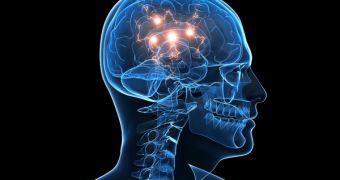It looks like Bruce Willis had it wrong all along. The ability to see dead people that walk among us without even knowing that they are dead is not humans' sixth sense. Numerosity, on the other hand, might just be.
In a paper published in the journal Science yesterday, September 5, researchers explain that numerosity is best described as an individual's ability to use visual cues to discern quantity.
Otherwise put, it gives us an idea of how many items of a kind can be found in a place at a given moment in time.
The scientific community has long been aware of the existence of this ability.
However, it was only recently when researchers discovered that numerosity is dependent on the organization and close proximity of several specific neurons.
What's more, the scientists were able to create a so-called topographic map for this ability, i.e. a map that shows where the neurons that form it sit, LiveScience reports.
All other human senses depend on a very precise neuron organization, hence the fact that topographic maps have been created for each of them.
Therefore, it might not be that far-fetched to argue that numerosity should be placed in the same category as sight, hearing, taste, smell and touch.
In their paper, the researchers explain that, after asking eight volunteers to look at pictures showing one or more dots and monitoring their brains all the while, they found that the anatomical center for numerosity is located in the posterior parietal cortex.
Whenever the volunteers were made to look at a fairly small number of dots, certain neurons fired up. When the scientists increased the number of dots, other neurons stepped in.
This suggests that, much like the clusters of neurons responsible for all other human senses, the part of the brain that governs numerosity is highly organized.
More precisely, the neurons that form it all perform the same task and are organized in ways that optimize communication between them.
“Scientists have suspected an ordered mapping of numbers for a long time. Many laboratories have been investigating this idea intensively. Finally, Harvey et al. succeeded in convincingly demonstrating a map of numerical quantity in the human brain,” researcher Andreas Nieder commented on the findings of this investigation.

 14 DAY TRIAL //
14 DAY TRIAL //